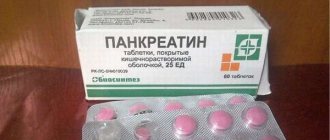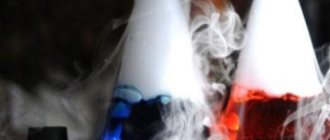Category: Chemical poisoning
Carbon monoxide is a gaseous substance that is colorless and odorless. Refers to substances of increased toxicity. Carbon monoxide poisoning poses a serious danger to the body of adults and children. How does it happen? What to do in case of such intoxication?
Carbon monoxide is a gas that does not cause irritation to humans. The boiling point is 190 degrees. The compound easily reacts with chlorine and metals.
Gas and its derivatives belong to the group of highly toxic substances. It is quite often used to create toxic substances used in wartime.
How it appears and the routes of poisoning
Carbon monoxide is formed during the combustion of substances that contain carbon with a minimum amount of oxygen. Increased emissions occur during the operation of blast furnaces, heat engines, and cookers. The appearance of gas occurs during welding and soldering processes. The toxin is formed in large volumes during strong explosions during mining and tunneling.
Poisoning routes
The substance is a gas, so the only route of entry into the body is through the respiratory system. Most of the compound is eliminated through the lungs after twelve hours.
Causes of carbon monoxide toxicity:
- improper use of fireplaces and chimneys;
- running the car in a room with poor ventilation; (exhaust gases)
- malfunctions in propane-powered home equipment;
- prolonged burning of kerosene in a poorly ventilated area;
- poorly filled devices to support the respiratory process;
- use of gas equipment in everyday life and industry;
- fire.
People living in large cities are most susceptible to intoxication. The air constantly contains increased amounts of carbon monoxide, which has a negative effect on the entire body.
You will like the article: “ Carbon monoxide poisoning – first aid and treatment .”
According to the International Classification of Diseases, poisoning with such a substance has an ICD 10 code - T58.
Why is carbon monoxide so dangerous to the human body?
Carbon monoxide begins its negative effect on the body after its components begin to combine with hemoglobin. Recall that hemoglobin is a chemical compound in the blood that consists of iron and protein. It is these microelements that are responsible for saturating tissues with oxygen. As a result of the combination of carbon monoxide and hemoglobin, carboxyhemoglobin begins to form, which completely stops transporting oxygen through the tissues. Because of this, oxygen starvation of tissues begins.
Therefore, the first symptoms are associated with the central nervous system, since it constantly needs adequate oxygen nutrition.
Symptoms of carbon monoxide intoxication
How does carbon monoxide overdose manifest? According to the severity of intoxication, four degrees are distinguished. Each of them is characterized by a specific clinical picture. What signs of carbon monoxide poisoning should you look out for?
Mild stage of poisoning
The very first stage occurs without loss of consciousness. This stage is characterized by the presence of the following signs:
- soreness in the head;
- dizziness;
- muscle weakness;
- shortness of breath, difficulty breathing;
- pale skin;
- noise in ears;
- nausea;
- urge to vomit;
- low pressure;
- disturbed heart rhythm.
If a mild degree of poisoning is detected, the victim is provided with access to fresh air. This will help avoid further development of intoxication.
Middle stage of poisoning
The concentration of the toxic substance in the body reaches 35%. This stage is characterized by prolonged fainting and lethargy. The described symptoms include:
- weakness;
- intense headaches;
- redness of the skin and mucous membranes;
- impairment of motor activity;
- a sharp decrease in pressure.
The breathing process in the second stage becomes more difficult. The development of pulmonary edema cannot be excluded.
Severe stage of poisoning
The third stage is diagnosed when the level of a dangerous compound in the blood rises to 50%. In this case, many internal organs suffer. The clinical picture of severe severity includes certain signs:
- red skin;
- elevated temperature;
- convulsive manifestations;
- rapid breathing;
- damage to the nervous system;
- swelling of the lungs.
Severe poisoning is often accompanied by loss of consciousness for ten or more hours. Without help, the patient falls into a coma.
Lightning stage of poisoning
This degree of poisoning occurs when a highly concentrated toxin quickly enters the body. It is characterized by rapid loss of consciousness, sharp redness of the victim’s skin, and the presence of convulsive manifestations. If the toxin level in the blood is more than 50%, death occurs.
Carbon monoxide poisoning is not only acute, but also chronic. The second form occurs with prolonged exposure to the toxin on the body.
Stages of chronic intoxication:
- First. It is characterized by constant fatigue, headaches, sleep disturbances, and frequent nausea. The patient complains of pain in the heart area, constant irritability and nervousness.
- Second. At this stage, damage to the cerebral cortex occurs. Memory impairment and cardiac dysfunction are diagnosed. A person is constantly in a bad mood, prolonged depression.
If signs of poisoning appear, you should consult a specialist. Before selecting treatment, a thorough diagnosis is carried out.
Possible complications
Poisoning does not go away without leaving a trace, and even with mild intoxication, certain consequences are observed.
Complications that may occur with mild to moderate intoxication:
- Chronic headaches and weather sensitivity, that is, a person experiences a deterioration in health due to weather changes;
- Frequent dizziness;
- Decreased cognitive abilities . That is, memory, attention, and perception of new information deteriorate;
- Deterioration in vision;
- Emotional instability (frequent outbursts of anger, anger, which are replaced by apathy).
Complications that arise from severe intoxication:
- Hemorrhages in the brain;
- Swelling of brain tissue;
- Acute myocardial infarction due to hypoxia;
- Inflammation of the respiratory tract (severe bronchitis, pneumonia);
- Coma is the most severe consequence of poisoning, which can result in the death of the patient.
First aid for overdose
First of all, in case of poisoning, a medical team is called. First aid is provided to the victim on the spot. It includes simple steps:
- The victim is provided with access to fresh air.
- A towel soaked in cool water is placed on the forehead.
- The patient is covered with a blanket to keep warm.
- The victim's head is turned to the side to avoid choking on vomit.
- If there are no signs of life, resuscitation is carried out - artificial respiration, chest compressions.
- Give the patient hot and sweet tea to drink.
Further treatment is carried out in a medical facility. It is forbidden to carry out therapy on your own to avoid negative consequences.
Treatments for carbon monoxide poisoning
The patient is taken to the hospital, where, after examination, suitable treatment is selected.
At the initial stage, the antidote – Acizol – is administered intravenously. Then other medications and procedures are prescribed. Therapy:
- To stimulate the respiratory process, Cititon, Bemegride, Corazol, and lobeline hydrochloride are used. The concentration, quantity and method of administration of drugs is prescribed by the attending physician.
- In the presence of convulsive manifestations, Aminazine is used.
- Lung function is restored with the help of artificial ventilation and the use of Carbogen.
- Vascular tone is normalized by administering norepinephrine or Mezaton solution.
- In case of heart muscle failure, sterile sodium chloride or Strophanthin is used.
- Mannitol or glucose solution is administered to prevent brain swelling.
Emergency care helps eliminate unpleasant symptoms and helps restore the functionality of internal organs. Treatment is continued until the body’s condition is completely normalized. They select vitamins and monitor the victim’s diet.
Pathophysiology
The pathophysiology of CO poisoning is not fully understood. Nevertheless, 4 mechanisms are known to explain the toxic effects of CO:
- tissue hypoxia;
- shift of the oxyhemoglobin dissociation curve;
- direct depression of the cardiovascular system;
- suppression of cytochrome A3.
Hypoxia
Carbon monoxide quickly passes through the pulmonary alveolar membrane. CO acts as a competitive inhibitor of oxygen binding through reversible binding to hemoglobin. The affinity of CO for hemoglobin is 240 times greater than the affinity of oxygen for hemoglobin. This results in high serum CO levels when exposed to an environment with a relatively low CO partial pressure. When air containing 0.01% CO is inhaled, the serum CO level is 10%. The end result of the formation of COHb is a decrease in the amount of oxygen carried by the blood. This causes tissue hypoxia, reflecting the prevailing toxic properties of CO.
Change in the oxyhemoglobin dissociation curve
Tissue hypoxia that occurs during the formation of COb does not adequately explain the toxic effects of CO. Hemoglobin has 4 binding sites for oxygen. If CO binds in one of these places, then the remaining three oxygen molecules are held more firmly by the hemoglobin molecule. This shifts the oxyhemoglobin curve to the left, further reducing the amount of oxygen available at the cellular level.
Cardiovascular failure
The extravascular content of CO is 10-15% of its total amount in the body. This part is bound by hemoproteins, including cytochrome P450, cytochrome A3 and myoglobin. Most of the extravascular CO is bound by myoglobin. In the presence of hypoxia and high serum concentrations of COHb, the level of carboxymyoglobin increases significantly. Because carboxymyoglobin dissociates more slowly than COHb, an increase in serum COHb levels may occur after treatment. After a decrease in serum COHb levels, myoglobin is released from its association with CO, causing an increase in serum COHb concentrations. Carbon monoxide binds cardiac muscle myoglobin in a 3:1 ratio compared to skeletal muscle. Carboxymyoglobin reduces the amount of oxygen available to the myocardium, which can lead to depression of the latter. Decreased myocardial function can lead to hypotension and cerebral ischemia.
Inhibition of cytochrome A3
Carbon monoxide also binds cytochrome P450 and cytochrome A3. The significance of cytochrome P450 binding is unclear. CO inhibits the cytochrome oxidase system in vitro, leading to respiratory depression at the mitochondrial level. This suppression of the cytochrome system may explain the deep neurological depression observed for a long time after a decrease in the “non-toxic” level of COHb. Goldbaum provides data supporting the cytotoxic theory. Control dogs died when CO inhalation occurred when the serum CO level reached 54-90%. Other dogs were phlebotomized and transfused with blood containing 80% COHb. These dogs (with blood transfusion) tolerated COHb levels of 59 to 64% without signs of toxicity. Goldbaum concludes that control dogs die due to suppression of cytochrome A3 and that COHb levels do not influence intoxication. The affinity of oxygen for cytochrome A3 is 9 times greater than that of CO. Opponents of the cytochrome suppression theory believe that the low affinity of cytochrome A for CO prevents sufficient binding of CO to cytochrome, which leads to suppression of cellular respiration. However, long-term exposure to CO in a hypoxic atmosphere can lead to moderate CO-cytochrome binding, which suppresses mitochondrial respiration. Recent research suggests that small amounts of dissolved CO can inhibit cellular respiration in a non-hypoxic system. The cytotoxic theory is refuted by two major studies. In Geyer's experiment, rats underwent complete blood replacement with an oxygen-carrying perftoran emulsion. Rats were noted to breathe freely with a mixture of 90% O2 and 10% CO. Control animals (without transfusion) quickly died in an atmosphere containing 95% oxygen and 5% CO. The Halebian study compares progressive CO poisoning with a pure graded anoxia model. If CO upsets the cytochrome system, then, in addition to a certain hypoxic effect, the amount of mitochondrial oxygen consumption should decrease. There were no differences in oxygen consumption when comparing models with CO and anoxia. This suggests that direct inhibition of cytochrome A3 does not lead to acute CO intoxication.
Consequences and methods of prevention
In case of severe poisoning, internal organs are affected. The consequences of such intoxication can be quite serious. What happens after an overdose of carbon monoxide? What happens:
- mental state disorder;
- disruptions in vision;
- Parkinson's disease;
- problems with the hearing aid;
- diseases of the respiratory system.
There are frequent cases of exacerbation of chronic diseases after such poisoning. The most serious consequence is considered death.
Prevention in case of poisoning
It is possible to avoid carbon monoxide intoxication by following safety precautions. It is required to follow simple rules at home and at work. How to protect yourself from poisoning?
Measures:
- monitor the integrity of the hose in home stoves;
- use protective equipment at work;
- turn off the ignition in a car in a closed garage;
- monitor ventilation in industrial premises.
Intoxication with carbon monoxide leads to the development of negative consequences and exacerbation of diseases. By following safety precautions, it is possible to avoid such overdoses. If signs of poisoning are detected, you should immediately consult a doctor.
Forecast
The prognosis depends on a number of factors, such as age, smoking, the presence of pulmonary or cardiovascular disease, the severity of intoxication, previous health conditions and type of therapy. Coma, cardiac arrest, severe metabolic acidosis, and high COHb concentrations are associated with a poor neurological prognosis. These factors, however, due to their variability, are not reliable indicators of outcome and therefore have limited prognostic value. Abnormal findings on computed tomography are associated with long-term neurological deficits. Almost all patients with abnormal CT scans have permanent neurological deficits.











